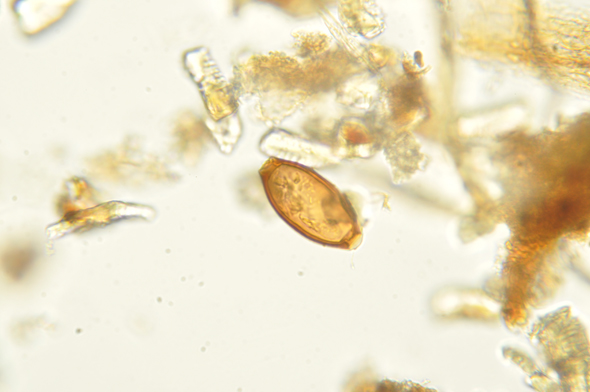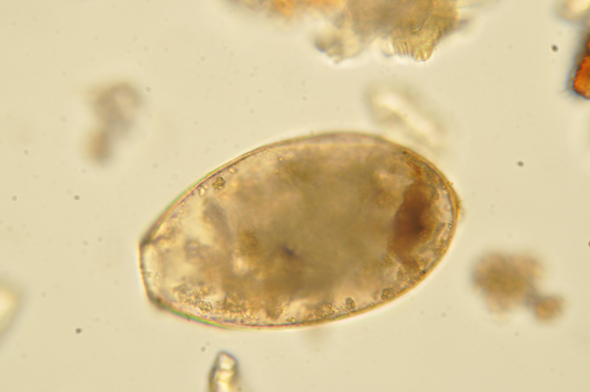Parasitic diseases at the Alvastra pile dwelling
By Jonas Bergman, Archaeologists, Swedish History Museums
Even after 86 years in dry storage (!), and almost 5000 years in the Alvastra bog, it’s still possible to find intestinal parasite eggs in relatively good condition from the culture layers of the Alvastra pile dwelling. After a brief preparation of two soil sample from one of the culture layers excavated by Otto Frödin in 1930 (Browall 2011) , two types of parasite eggs were identified. The presence of these represents two parasitic diseases: whipworm- and liver fluke infection. Whipworm is perhaps the parasite most associated with crowding and poor sanitation, whereas liver fluke is a serious and potentially lethal illness for sheep and cattle. In this way, archaeoparasitology can be a great help in reconstructing local livestock, health and hygiene, food preferences etc.

Egg from whipworm (Trichuris cf trichiura), most likely from human. It is c. 0.06 mm in length. Photo: Jonas Bergman
.
Egg from common liver fluke (Fasciola hepatica). It is most common in sheep but can also infect cattle and humans. Photo: Jonas Bergman
Reference:
Browall, H., 2011. Alvastra pålbyggnad. 1909-1930 års utgrävningar. Kungl. Vitterhets Historie och Antikvitets Akademien. Handlingar. Antikvariska serien 48. Stockholm.
Bli först att kommentera